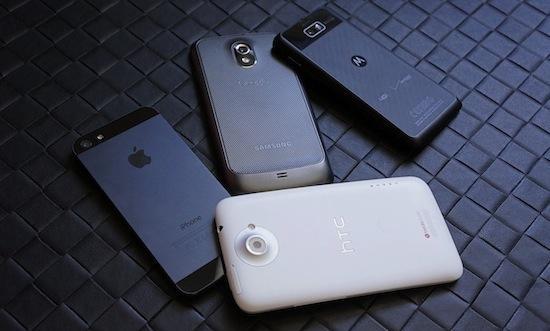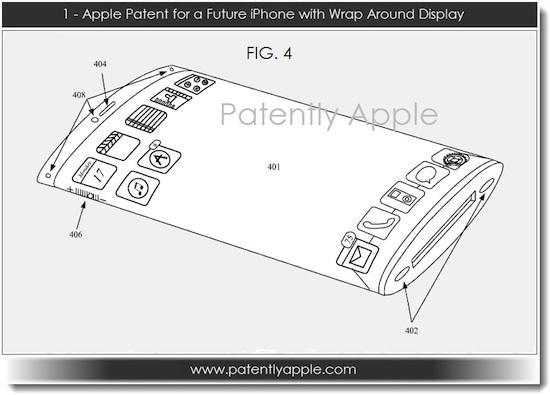
Smartphones are getting big. They're getting lighter. Most are getting wider, too. Ultimately, the trend of larger smartphones is mimicking how the very first cell phones looked: enormous to the point of recklessness. But the trend of increased screen sizes is showing no signs of letting up. So, how much bigger can they get?
There are very few manufacturers who have not responded to the competition by adding some extra screen real estate to their flagship. But the size of the screen is only half the battle. It has taken me a while to find my "sweet spot" screen size. At just under 5 inches, a display is perfectly manageable and useful for what I need. There's only one problem, most new flagship devices are either exceeding 5 inches, or matching it, and I am just a bit hesitant to go out and grab a smartphone with a screen that size. The other part of the battle is making a screen that doesn't negate the experience of the software. We have seen countless manufacturers add their fair share of tweaks to Android in hopes of making their device more useful in practice. But the size of the screen is still primarily limited by its software if these tweaks aren't successfully implemented. After all, who wants to use a 5.5 inch screen running Apple's iOS.
By now, I'm probably starting to sound like Anna, a fellow PhoneDogger who just can't justify jumbo phone screens. Luckily, there could be a solution in the distant future for us.
A patent outlined by Patently Apple, a blog devoted to reporting Apple patents, describes a patent filed for a flexible, wraparound screen. The screen would wraparound the entire device and could potentially project different images on either side. The patent also describes the device as devoid of physical buttons; virtual buttons would substitute. The patent goes on to mention that the smartphone's chassis would be primarily aluminum or transparent glass with an oleophobic coating to reduce fingerprints.

With that said, there are countless patents filed by Apple weekly, so just because the idea is out there doesn't mean it will come around anytime soon. Likewise, it wouldn't be smart to write off the possibility of a wraparound display in future smartphones.
(Spoiler alert! The iPhone 20 could come with a wraparound display.)
My first reaction to reading through this patent was that it would make the most sense with a smart watch. There has been speculation surrounding Apple's iWatch and its display. Some have reported that previous Apple patents and Corning's flexible Willow Glass could mean the watch would have a curved display. A watch with a contoured display that fitted your wrist would make sense.
But in all honesty, to me, a wraparound smartphone screen sounds farfetched, especially if you consider Apple's current predicament: the state of iOS. As you may have noticed, the button placements on each iPhone has remained consistent, which is hardly an accident. Apple has built iOS as the operating system which prioritizes simplicity and ease of use. If you were to change any hardware feature of the device, the entire software would need to compliment it in order to function. For instance, the home button is a requirement for the iPhone due to it serving multiple purposes: it takes you to the home screen, it launches Siri, and it opens the multitasking pane. With a display that wraps around, the virtual buttons would need to be baked into the operating system's code in order to allow that fluid, iOS experience Apple prioritizes.
Now, smartphones running any open source operating system like Android, Firefox OS, and Tizen OS, could easily implement software features more rapidly than a closed ecosystem could. With the open source blueprint, manufacturers can run away with the OS and add their own software tweaks and user interfaces to add value in their own unique way. Collaboration is just one of many perks of an open source platform.
There's no doubt that we are a long way off from seeing this technology in a smartphone. But if it does come to fruition, it could be a game changer. As smartphone screens have grown to tablet proportions, a wraparound display could supplement our desire for more screen real estate in the traditional two-dimensional sense. Unless you have a Google Nexus S, or Samsung Galaxy Nexus, the screen of your smartphone is a flat affair. By allowing the display to be used on its entire axis (front and rear sides), the experience of a smartphone could finally come to a point where it represents alien-like innovation.
Regardless of the idea of a wraparound display, the fact that it's even a possibility is a testament to the mobile industry. To think this is even feasible is pretty remarkable.
All in all, a wraparound display could be something we see in a future smartphone, but not without a major overhaul on the software front. With a screen that flexes, or wraps, we might start to see the size of smartphones level off, providing people like me who prefer a balance between size, and functionality, with a trendy alternative.
Does the idea of a wraparound display make sense? Could it fulfill our desire for larger screens? Would a curved display negate the benefits of a large, flat screen?
Image via PatentlyApple.